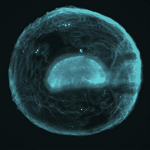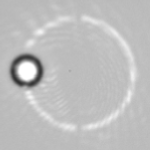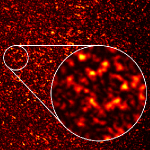Research
Optical Imaging

The use of shaped light allows us to image large biomedical objects (eg tissue, small organs) at high resolution with less exposure to light, meaning less damage and faster image acquisition, and to see through scattering material such as tissue.
Optical Trapping

A strongly focused beam of light can be used to trap and move objects ranging in size from tens of nanometers to tens of micrometers. These optical tweezers have become a widely-used tool in biology, physical chemistry, and fundamental physics.
Optical Metrology

We harness light to probe the chemical structure of materials from bacteria to whiskey using Raman spectroscopy. We also develop innovative methods to measure properties of the light itself, by scrambling it into grainy speckle patterns.
